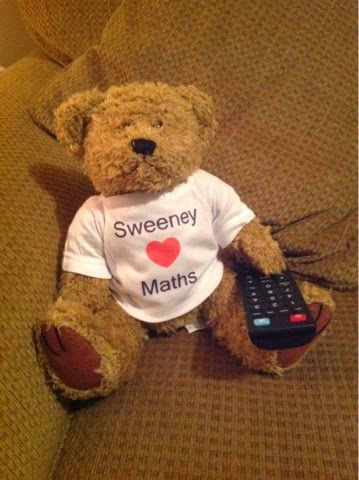Total Pageviews
Monday 17 November 2014
Junior Cert - Functions
Monday 10 November 2014
Measuring Pi
Good luck
Mr Gilmartin
Friday 7 November 2014
Leaving Cert Ordinary Level - Cosine Rule
Mr Gilmartin
Tuesday 21 October 2014
Tuesday 14 October 2014
Friday 19 September 2014
Problem Solving - Puzzle 6 The Tricky Triangle
Watch the clip below to see how it's done.
Tricky Triangle Puzzle from Magh Éne College on Vimeo.
Wednesday 17 September 2014
Problem Solving - Puzzle 7 Sticky Squares
Thursday 11 September 2014
Problem Solving - Puzzle 1

Sunday 25 May 2014
Wednesday 14 May 2014
Leaving Cert Exam Supplement
Sunday 11 May 2014
Review of Leaving Cert Revision Days
Would you mind filling out this questionnaire please? It will only take you a minute or two!
CLICK HERE
Many thanks,
Mr.Sweeney.
Thursday 27 March 2014
Wednesday 26 March 2014
Thursday 13 March 2014
Tuesday 11 March 2014
LC Homework Area and Volume
Best of Luck
Mr.Gilmartin
Tuesday 4 February 2014
Rational and Irrational numbers
Rational and Irrational Numbers
Rational Numbers
A rational number is a number that can be written as a ratio. That means it can be written as a fraction, in which both the numerator (the number on top) and the denominator (the number on the bottom) are whole numbers.
- The number 8 is a rational number because it can be written as the fraction 8/1.
- Likewise, 3/4 is a rational number because it can be written as a fraction.
- Even a big, clunky fraction like 7,324,908/56,003,492 is rational, simply because it can be written as a fraction.
Every whole number is a rational number, because any whole number can be written as a fraction. For example, 4 can be written as 4/1, 65 can be written as 65/1, and 3,867 can be written as 3,867/1.
Irrational Numbers
All numbers that are not rational are considered irrational. An irrational number can be written as a decimal, but not as a fraction.
An irrational number has endless non-repeating digits to the right of the decimal point. Here are some irrational numbers:
π = 3.141592…
= 1.414213…
Although irrational numbers are not often used in daily life, they do exist on the number line. In fact, between 0 and 1 on the number line, there are an infinite number of irrational numbers!
Enjoy,
Mr. Sweeney.
Wednesday 29 January 2014
Junior Cert Maths - Probability
Monday 27 January 2014
Junior Cert Maths - Congruent Triangles
Sunday 26 January 2014
$1,000,000 to be won!
http://www.cs.nuim.ie/courses/compthink/app2/scalesapp/index.php
Enjoy.
Mr.Sweeney
Saturday 18 January 2014
Number Systems
Best of luck.
Mr.Sweeney
Friday 17 January 2014
Injective, Surjective & Bijective
Good luck.
Mr.Sweeney.
Junior Cert Maths- Factorisation
Sunday 12 January 2014
Thanks
Friday 10 January 2014
Induction - Sample Solutions
Thursday 9 January 2014
Wednesday 8 January 2014
Project Math Exam Papers and Solutions
Induction
Read more on induction here.
Good luck.
Mr.Sweeney
Tuesday 7 January 2014
Problem solving
A student is given five random cards from a standard deck of 52 cards. He must choose four cards to reveal to his professor and the order in which to reveal them; his goal is to reveal four cards in such a way that the professor knows what the fifth hidden card is. How does he do this?

